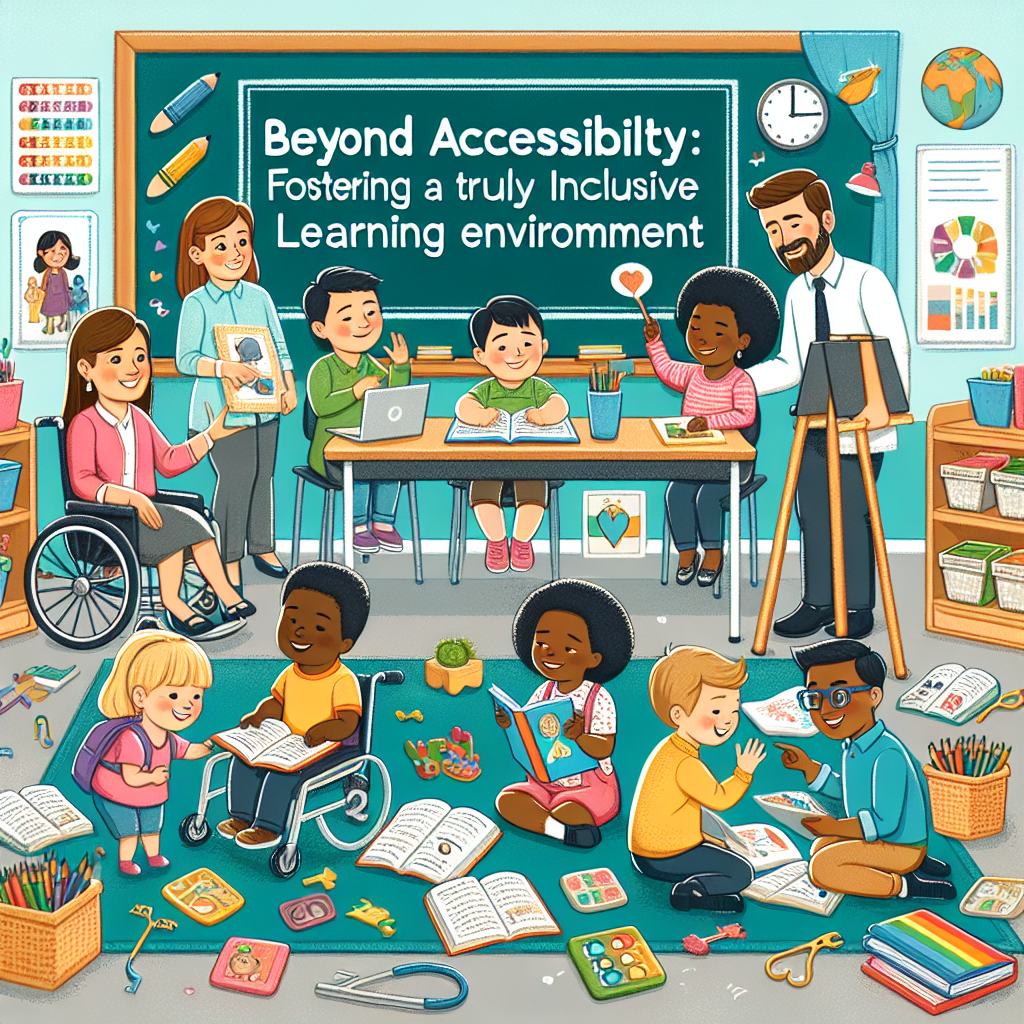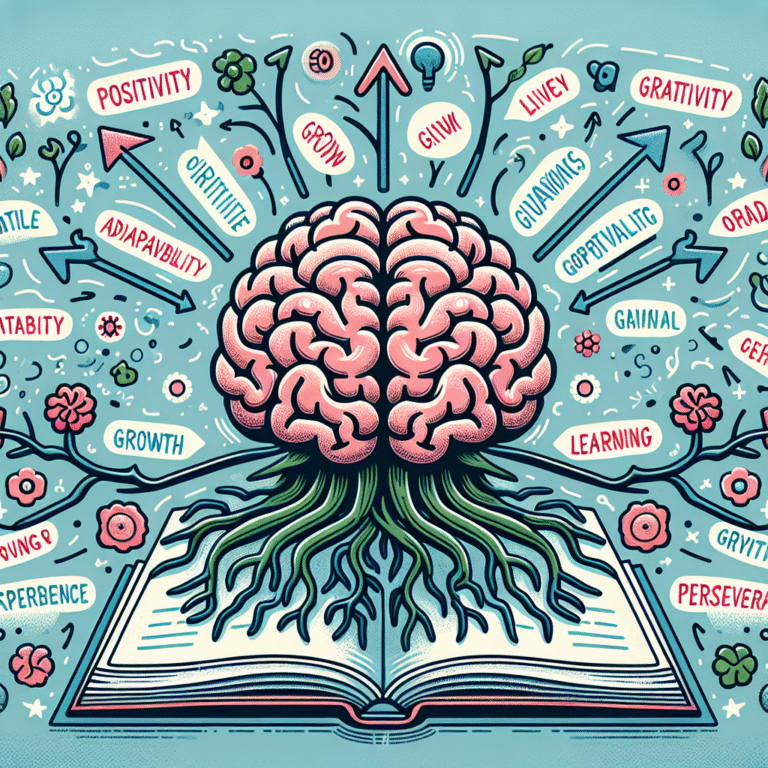
Introduction
Imagine a classroom where every student feels not just welcomed, but also fully engaged and empowered to contribute. This is the essence of what it means to go "beyond accessibility." While ensuring access to educational resources is crucial, fostering a truly inclusive learning environment involves a deeper commitment to understanding and catering to the diverse needs of all students. As we delve into Beyond Accessibility: Fostering a Truly Inclusive Learning Environment, we’ll explore strategies, insights, and real-world case studies that can transform educational spaces into hubs of inclusion and engagement.
The Importance of Inclusivity in Education
Inclusivity in education means creating an atmosphere where every student, regardless of their background or ability, feels valued and equipped to succeed. The World Health Organization estimates that over 1 billion people live with some form of disability—this statistic underscores the critical need for educational systems to adapt and evolve. The movement toward true inclusivity fosters not only individual growth but also enhances the learning experience for everyone involved.
Understanding the Difference: Accessibility vs. Inclusivity
While accessibility focuses on providing the necessary tools for learning (e.g., ramps, adapted materials), inclusivity extends further. It involves an active effort to engage with diverse learning styles, cultural backgrounds, and personal experiences. Consider this:
| Accessibility | Inclusivity |
|---|---|
| Provides tools and resources | Encourages participation and collaboration |
| Meets legal standards | Celebrates diversity and nurtures community |
| Passive adaptation | Active engagement and empowerment |
A Case Study: The University of California, Berkeley
UC Berkeley recently launched several pilot programs aimed at creating inclusive classrooms. Faculty members underwent training to adopt Universal Design for Learning (UDL) principles, leading not just to improved access but enhanced overall student satisfaction. In one course, instructors allowed for multiple forms of assessment—projects, presentations, and written assignments—accommodating various learning styles. Feedback indicated that students felt more valued and engaged, showcasing the benefits of moving beyond accessibility.
Strategies for Fostering an Inclusive Learning Environment
1. Embrace Diverse Learning Styles
Understanding that students have different ways of processing information is crucial. Some may excel through visual materials, while others may favor auditory or kinesthetic learning. Employing varied instructional methods can reach all students more effectively.
Actionable Insight:
- Utilize mixed media—videos, podcasts, hands-on activities—to cater to different learners.
2. Encourage Open Dialogue
Creating a safe space for dialogue can empower students to express their thoughts and feelings. Encourage discussions around inclusivity and respect, as this not only builds community but also fosters empathy among students.
Case Study: Highline College
At Highline College, the establishment of a student-led inclusivity committee has transformed the school culture. Students are encouraged to share their experiences, and the administration actively integrates this feedback into programming. As a result, they’ve seen a marked increase in student retention and satisfaction.
3. Leverage Technology
Technology can play a pivotal role in fostering inclusivity. Adaptive technologies can offer personalized learning experiences, helping to meet individual needs.
| Technology | Application |
|---|---|
| Screen Readers | Assist visually impaired students |
| Speech-to-Text Software | Aid students with writing challenges |
| Learning Management Systems | Provide a platform for diverse materials |
Example:
Tools like Google Classroom allow educators to customize assignments for each student, enabling personalized learning journeys.
4. Foster Collaborative Learning
Group work can enhance learning by allowing students to share their unique perspectives. Creating diverse groups ensures that all voices are heard and valued.
Analysis:
Collaboration encourages problem-solving and critical thinking. A study conducted at Stanford University found that students engaged in group work demonstrated a deep understanding of course material compared to their peers in traditional lecture settings.
Overcoming Barriers to Inclusivity
1. Addressing Implicit Bias
Implicit biases can unconsciously influence how educators interact with and assess their students. Training programs focusing on equity and inclusivity can help faculty recognize and combat these biases.
2. Providing Continuous Professional Development
In-service training on inclusivity strategies empowers educators to stay updated on best practices. Ongoing workshops can focus on effective communication, the use of technology, and methods for supporting students with varying needs.
3. Engaging Families and Communities
Involving families in the educational process fosters a sense of belonging. Schools should create outreach programs that engage parents and caregivers, ensuring that their perspectives inform school policies and practices.
Case Study: The AltSchool Model
AltSchool has reimagined education by creating a flexible learning environment that involves families in the curriculum development process. By incorporating feedback from students and their families, they have seen higher engagement rates and academic success.
Measuring Success in Inclusivity
To know if efforts to foster an inclusive environment are successful, it’s essential to track progress through qualitative and quantitative measures. Feedback surveys, focus groups, and academic achievement data are potent tools for assessing the impact of inclusivity initiatives.
Sample Metrics to Evaluate Inclusivity
| Metric | Description |
|---|---|
| Student satisfaction surveys | Assess overall experience and comfort |
| Academic performance metrics | Track grades and retention rates |
| Participation rates in activities | Monitor engagement levels across programs |
A Case Study Analysis: The Oasis School
At The Oasis School, a focus on creating an inclusive culture has led to notable academic improvements. By regularly assessing student feedback and tracking performance metrics, they’ve undergone a comprehensive shift towards inclusivity, exemplifying how measurable outcomes reinforce commitment to the mission of beyond accessibility.
Conclusion
In summary, Beyond Accessibility: Fostering a Truly Inclusive Learning Environment is not just a theoretical concept; it’s an actionable framework that can transform educational experiences. By embracing diverse learning styles, encouraging dialogue, leveraging technology, and fostering community, we can create learning spaces where every student thrives.
As educators, administrators, and community members, our commitment to inclusivity is crucial. This commitment doesn’t just elevate individual students; it enriches the educational experience for everyone and fosters a culture of respect and understanding. Let’s challenge ourselves to continually seek ways to make our learning environments inclusive, ensuring equitable access to opportunity and growth for all.
FAQs
1. What are the foundational principles of an inclusive learning environment?
The foundational principles include respect for diversity, equitable access to resources, active engagement of all learners, and a commitment to ongoing professional development.
2. How can technology be effectively utilized to promote inclusivity?
Adaptive technologies and varied platforms (like learning management systems) can provide personalized learning experiences that cater to individual needs.
3. What role does teacher training play in fostering inclusivity?
Teacher training is essential for raising awareness of implicit biases, equipping educators with effective teaching strategies, and ensuring they can create safe and welcoming classroom environments.
4. How can families be involved in promoting inclusivity in schools?
Families can participate by engaging in school activities, providing feedback, and collaborating on curriculum development, which in turn fosters a strong sense of community.
5. What metrics can be used to evaluate the success of inclusivity initiatives?
Metrics such as student satisfaction surveys, academic performance metrics, and participation rates in school activities are effective in measuring the impact and success of inclusivity initiatives.
In conclusion, fostering a truly inclusive learning environment is a vital and ongoing journey. The key lies in our willingness to adapt, listen, and grow together.















